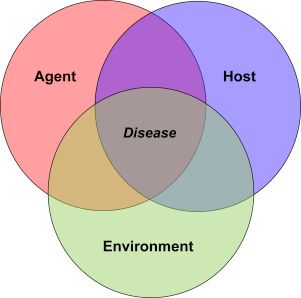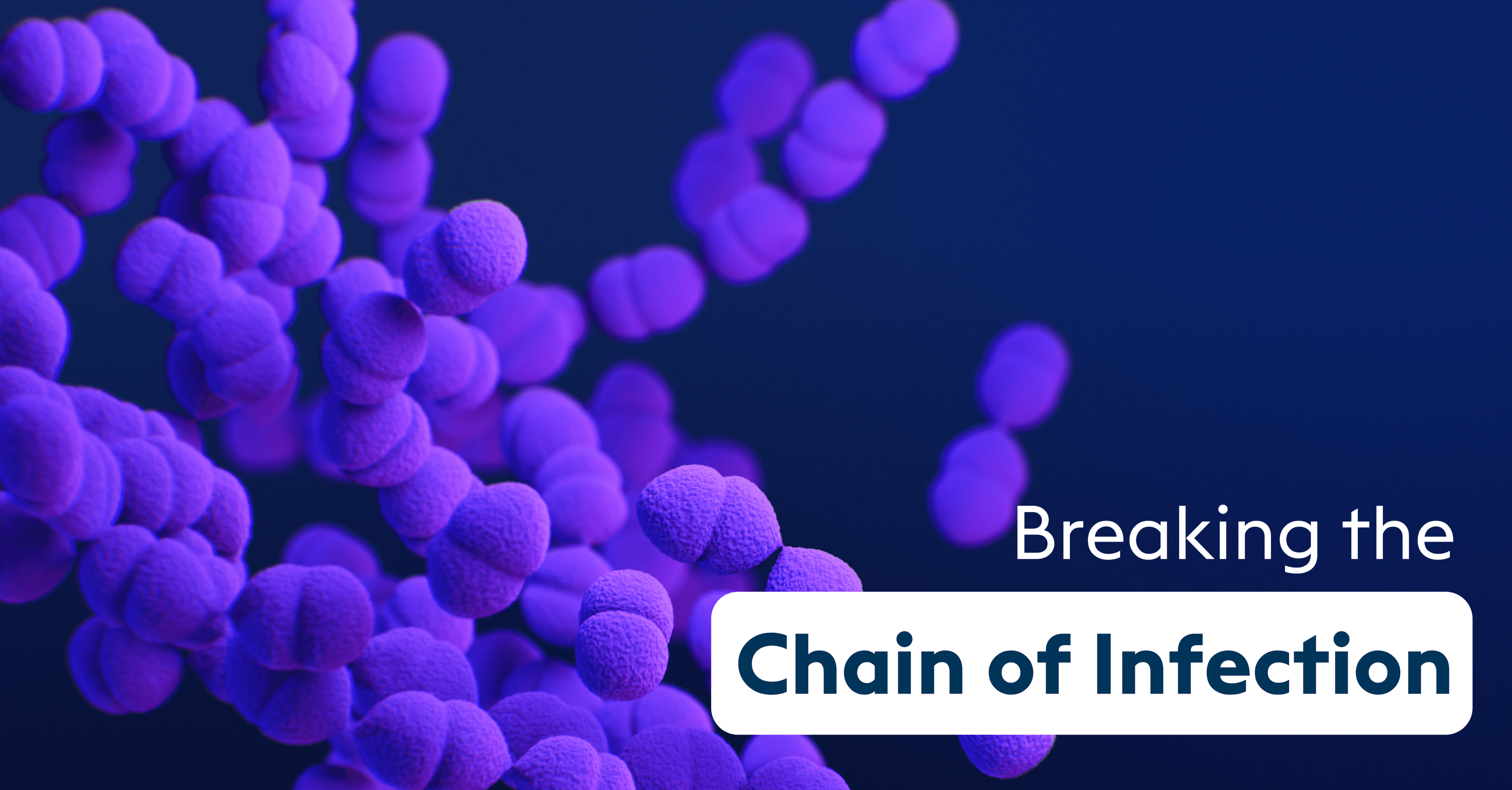Infectious Disease Model
Controlling and preventing the spread of infectious disease relies on understanding the foundations of disease transmission. The process of infectious disease transmission involves a series of interaction between an agent (pathogen), host, and environment. This classic triad of interactions is presented as the communicable disease model. Infectious agents may be bacteria, viruses, parasites, or fungi. When agent and host interact in an optimal environment, it initiates a cascade of events that lead to infection, disease, and death or recovery.1 It is important to note that infection does not necessarily equal disease. Infection is a disruption in normal functions of the host but may not result in disease. Disease is the result of a severe infection that it leads to symptoms and signs of illness.

An infectious disease (communicable disease) is defined as an illness caused by a pathogen through transmission from an infected human, animal, or contaminated environment.1 The concept of infectious diseases naturally involves a social phenomenon, whereby the interactions between individuals is driving force enabling transmission.
The series of events that allow infectious diseases to spread between individuals in our population is known as the “Chain of Infection”. Transmission occurs when the agent leaves its reservoir or infected host through a portal of exit and invades a susceptible host through a mode of transmission and portal of entry.2
Chain of Infection Model:
As noted, the causation and spread of infectious disease involves the interplay between agent, host, and environmental factors. The series of events that allow transmission to occur in a population is known as the chain of infection. The model includes the following six links:
1. Infectious agent (The cause of the infectious disease): Pathogenic bacteria, virus, fungi, parasite et.
2. Reservoir (place where agent lives, grows, and multiply): Examples of these include humans, animals, and the environment.
3. Portal of exit (how infectious agents leave reservoir): Examples include through the respiratory tract, urine, feces, or skin lesions.
4. Mode of transmission (the way infectious agents travel to infect another host): This can include direct/indirect contact through droplets, airborne, vehicle, or vector borne means of transmission.
5. Portal of entry (how infectious agents make their way inside a host): Entry portals typically include exposed environments like the eyes, mouth, nose, or open wounds.
6. Susceptible host: Exposure to an infectious agent does not always cause disease. Factors like age, underlying health conditions, health habits, and immunization history can affect your risk to infection. Figure: Mode of transmission of infection. Image courtesy of Toronto Public Health
Figure: Mode of transmission of infection. Image courtesy of Toronto Public Health
Ultimately, the Goal is to Break The Chain
A thorough understanding of the chain is crucial to establishing control and prevention efforts to stop disease spread. Creating safe environments should be a top priority of every industry, school, and public organization. Therefore, it is important to take the appropriate interventions to interrupt the chain of infection.
One basic approach to preventing transmission is to practice proper hand hygiene along with the sanitization of high touch items, especially mobile devices. Studies have shown that mobile phones can be a source for microbial reservoirs, exposing the possible risk that it can contribute to transmission of infections in the environment.3,4 CleanSlate UV devices help limit the spread of infection by addressing the problem of cross contamination involved with dirty phones. With UV-C technology, CleanSlate UV can disinfect mobile phones and tablets by inactivating pathogens that lead to infectious disease. When integrated with proper hygiene protocols, CleanSlate UV devices can be a proactive intervention directed at stopping the chain of transmission.
1. van Seventer, Jean Maguire. and Natasha S. Hochberg. “Principles of Infectious Diseases: Transmission, Diagnosis, Prevention, and Control.” International Encyclopedia of Public Health (2017): 22–39. doi:10.1016/B978-0-12-803678-5.00516-6
2. Centers for Disease Control and Prevention. 2020. Principles of Epidemiology – in Public Health Practice.
3. Olsen, M., Campos, M., Lohning, A., Jones, P., Legget, J., Bannach-Brown, A., McKirdy, S., Alghafri, R., & Tajouri, L. (2020). Mobile phones represent a pathway for microbial transmission: A scoping review. Travel medicine and infectious disease, 35, 101704. https://doi.org/10.1016/j.tmaid.2020.101704
4. Ibrahim, T., Chamseddine, A. N., & Baz, M. (2020). Mobile phones: A forgotten source of SARS-CoV-2 transmission. American journal of infection control, 48(8), 971–972. https://doi.org/10.1016/j.ajic.2020.05.019


